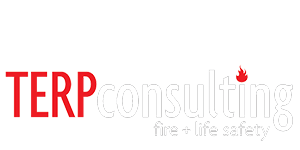
24 May Understanding Wildfires and Their Behavior
Over the past decade, the number of wildfires has increased drastically in size and severity. Across continents and climates, fire seasons are becoming the expected norm on annual calendars. The year 2020 saw over 10 million acres burn globally, the bushfires in Australia, California, and Indonesia being some of the most devastating events.
Wildfires typically start in drought conditions and spread rapidly in areas with continuous fuels like thick vegetation and tree canopies. Wildfire can easily outpace initial firefighter response and spread into populated areas. Some homes are more combustible than the wildland vegetation around them. A rapidly spreading wildfire coupled with highly flammable homes can cause widespread destruction.
Here are some definitions to familiarize yourself with:
Wildland – An area in which development is essentially non-existent, except for roads, railroads, power lines, and similar transportation facilities. Structures, if any, are widely scattered.
Wildland Fire – Any non-structure fire that occurs in the wildland. There are three types of wildland fires:
—Prescribed Fire – Any fire ignited by management actions to meet specific objectives. A written, approved, defined fire plan must exist, and NFPA requirements (where applicable) must be met before ignition.
—Wildfire – A wildfire is an unplanned, unwanted wildland fire, including unauthorized human-caused fires, escaped wildland fire use events, escaped prescribed fire projects, and all other wildland fires where the objective is to put the fire out.
—Wildland Fire Use – The application of the appropriate management response to naturally ignited wildland fires to accomplish specific resource management objectives in pre-defined designated areas outlined in Fire Management Plans.
Wildfire behavior
Wildfires occur when the conditions to ignite and spread are right. Nevertheless, the time of the year influences the effects of the fire. The fire season at present for the Western U.S. is from June through October and for the Southeast is typically from March to May. The other main factors are geography, topography, fuel, and weather.
There are three primary wildfire exposures: embers, radiant heat, and direct contact flame. Fires can start when embers land on or become lodged in easily ignited materials. Radiant Heat Exposure from wildland fires generally means the fire has spread to areas adjacent to the structure, and the degree of heat exposure will depend on the size of the fire and the distance from the fire front to the structure.
The primary risk of radiant heat exposure involves the compromise of windows fracturing from heat stress, leading to the ignition of interior combustibles and, ultimately, a fully involved structure fire. Direct contact flame occurs when flames impinge on building systems and materials. This contact can occur from the main wildfire flames, or from burning elements surrounding a structure, or from a neighboring building.
Wildfires attack the building from the outside and are influenced by three main factors.
- Weather: wind, temperature, and precipitation (or lack of)
- Topography: steep slopes, canyons, and direction of slope face can cause fire to spread faster
- Fuels: three types of fuels
- Fine fuels: grasses and needles
- Ladder fuels: shrubs and small trees
- Heavy fuels: trees, downed logs, homes, and buildings
Understanding what wildfires are and how they behave is an essential step in protecting your family, home, and community.
Wildfires and Building Codes
The Wildland-Urban Interface Code (WUI) and local building codes contain minimum requirements that address materials and construction methods that will protect the exterior of a structure from wildland fire exposure. To protect the exterior of a building from wildfire, the material of the building, surrounding landscape, and other fire protection methods can be utilized to mitigate the effects of a wildfire.
Source: National Fire Protection Association (NFPA)





No Comments